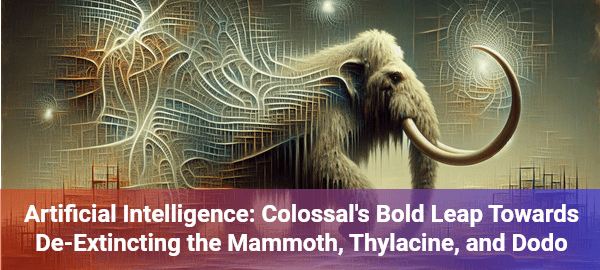Artificial intelligence is rewriting the rules of extinction and resurrection.
In the realm of groundbreaking scientific innovation, technological breakthroughs continue to push the boundaries of what we once thought impossible. Colossal BioSciences is now challenging the very concept of extinction by leveraging cutting-edge artificial intelligence and genetic engineering technologies.
As a tech enthusiast who’s witnessed countless scientific revolutions, I’m reminded of a conversation with a geneticist friend who once joked that bringing back extinct species sounds like a plot from a sci-fi novel – turns out, science is stranger than fiction!
Artificial Intelligence: De-Extinction’s Technological Frontier
Colossal BioSciences has raised an extraordinary $200 million to pursue the seemingly impossible: resurrecting extinct species like the woolly mammoth, thylacine, and dodo. By combining advanced artificial intelligence with genetic engineering, the company is transforming scientific imagination into potential reality through their groundbreaking de-extinction projects.
The company’s scientific approach involves meticulously recovering and analyzing preserved genetic material, using AI to identify core genomic components and develop sophisticated reconstruction strategies. Their team of over 170 scientists has already generated the most complete ancient genomes for mammoth, thylacine, and dodo species, creating comprehensive genetic blueprints.
With a remarkable $435 million raised since 2021 and a current valuation of $10.2 billion, Colossal is not just pursuing de-extinction but also developing technologies with broader applications in species preservation and human healthcare, demonstrating the transformative potential of artificial intelligence in scientific research.
Artificial Intelligence De-Extinction Business Concept
Develop a specialized genetic restoration platform that uses AI to help conservation organizations identify and potentially reconstruct critically endangered species’ genetic profiles. By offering a subscription-based service to zoos, wildlife preserves, and research institutions, the platform would provide genetic mapping, potential trait reconstruction, and conservation strategy recommendations, creating a recurring revenue model while contributing to global biodiversity preservation efforts.
Reimagining Our Biological Future
The future of scientific innovation is here, and it’s more exciting than we could have ever imagined. Are you ready to witness how artificial intelligence might not just preserve our current biodiversity but potentially resurrect what we’ve lost? Share your thoughts, and let’s explore this incredible frontier together!
Quick FAQ on De-Extinction
- Q: How realistic is de-extinction?
A: With current AI and genetic technologies, scientists are making significant progress in reconstructing extinct species’ genomes. - Q: What species is Colossal focusing on?
A: Woolly mammoth, thylacine, and dodo are their primary de-extinction targets. - Q: What are potential benefits?
A: Ecosystem restoration, conservation insights, and advanced genetic research technologies.
